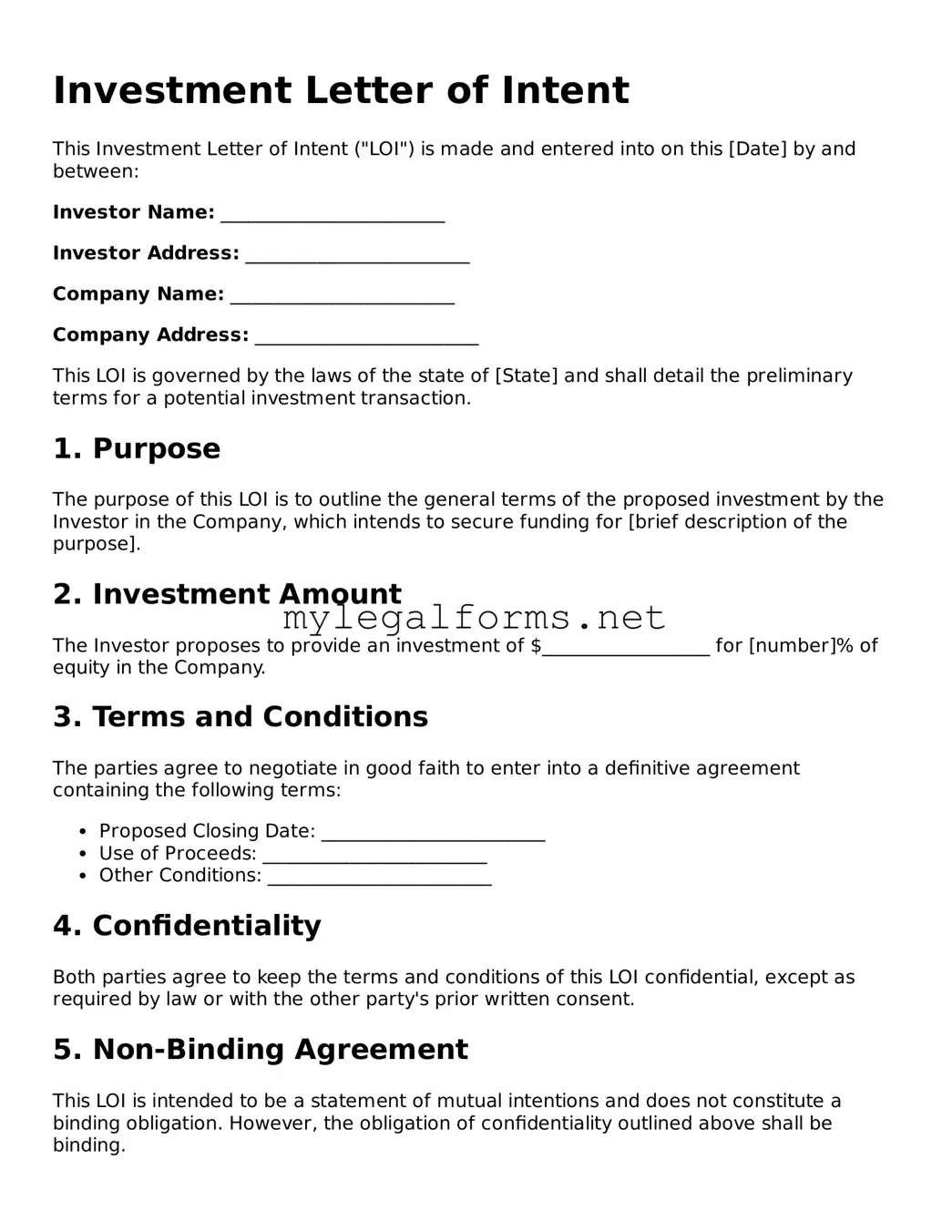Investment Letter of Intent
This Investment Letter of Intent ("LOI") is made and entered into on this [Date] by and between:
Investor Name: ________________________
Investor Address: ________________________
Company Name: ________________________
Company Address: ________________________
This LOI is governed by the laws of the state of [State] and shall detail the preliminary terms for a potential investment transaction.
1. Purpose
The purpose of this LOI is to outline the general terms of the proposed investment by the Investor in the Company, which intends to secure funding for [brief description of the purpose].
2. Investment Amount
The Investor proposes to provide an investment of $__________________ for [number]% of equity in the Company.
3. Terms and Conditions
The parties agree to negotiate in good faith to enter into a definitive agreement containing the following terms:
- Proposed Closing Date: ________________________
- Use of Proceeds: ________________________
- Other Conditions: ________________________
4. Confidentiality
Both parties agree to keep the terms and conditions of this LOI confidential, except as required by law or with the other party's prior written consent.
5. Non-Binding Agreement
This LOI is intended to be a statement of mutual intentions and does not constitute a binding obligation. However, the obligation of confidentiality outlined above shall be binding.
6. Next Steps
Upon mutual agreement of the terms listed herein, the parties shall proceed to negotiate and finalize a more detailed investment agreement.
7. Acceptance
If you agree with the terms outlined in this LOI, please sign and date below:
Investor Signature:
________________________
Date: ____________________
Company Signature:
________________________
Date: ____________________
This investment proposal represents an exciting opportunity for both parties. Thank you for considering this partnership.
